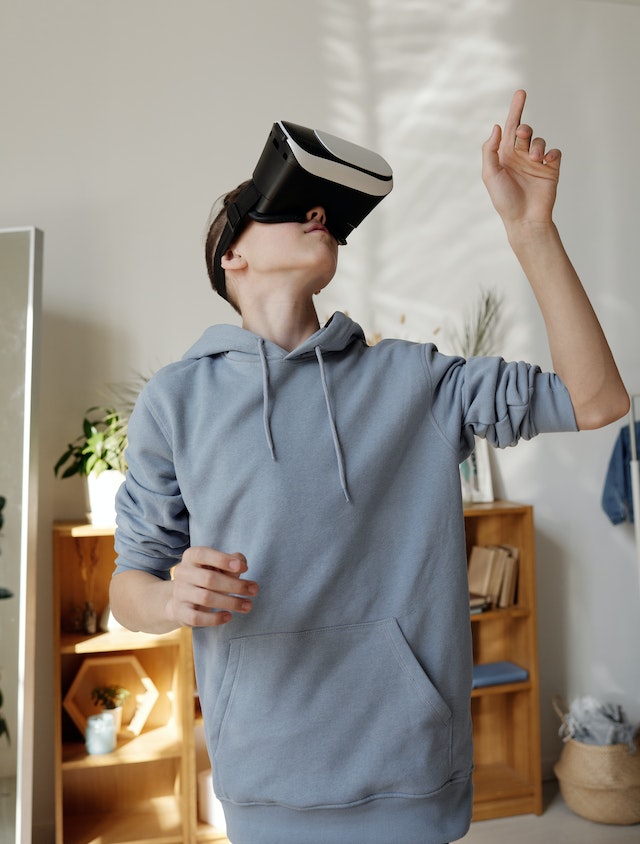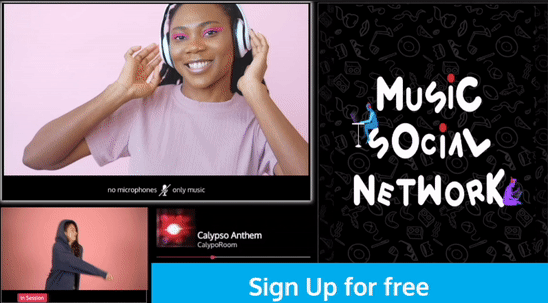Regional differences in music social network use

Table of content
Regional differences in music social network use - Introduction
In the fascinating and ever-evolving world of music, the rise of social networking platforms is a game-changing phenomenon we can't afford to overlook.
These digital platforms, rich with the harmonies of global cultures and fueled by the universal language of music, have created a paradigm shift, forever changing how we consume, share, and interact with music.
The incredible ascent of these platforms, however, is not uniform across the globe. From the bustling streets of New York to the quiet corners of rural Asia, music social networks' usage varies widely, painting a diverse tapestry of engagement.
This kaleidoscopic variation is not a mere detail. It's a critical element that deepens our understanding of these platforms and the ever-shifting landscape of music consumption.
By studying these differences, we delve deeper into the symphony of human interaction with music, from personal tastes and cultural influences to access and affordability.
Therefore, understanding regional differences in usage is not just a fascinating endeavor; it's a vital one.
It helps artists, producers, and platforms alike to better cater to diverse audiences, build more meaningful connections, and ultimately, create a music world that truly resonates with all.

KEY TAKEAWAYS
Emergence of music-specific social networks: Before the advent of music-centric social networking platforms, generic social media played a significant role in transforming the distribution and consumption of music. The rise of influencer culture significantly shaped music trends and gave artists new platforms to connect with fans, paving the way for music-specific social networks.
Redefinition of music consumption: Music-specific social networks have significantly reshaped music consumption, breaking geographic and temporal barriers. People now actively participate in global music communities, allowing them to explore diverse music scenes and eras, fostering a more enriched music culture.
Innovation and monetization in music social networks: Platforms like CalypsoRoom have brought innovation by offering shared real-time music experiences, transcending digital barriers and recreating live shared music moments. Additionally, these platforms have adopted various monetization strategies influencing their features, user experience, and overall industry impact.
CalypsoRoom's transformative impact: CalypsoRoom, by enabling real-time, shared music experiences with visual components, revolutionizes the dynamics of artist-fan interaction on music social networks. It offers a new level of intimacy between artists and fans, and supports local music scenes and independent artists by providing exposure and fostering meaningful engagement.
Regional differences in music social network use: User demographics, local music scenes, cultural preferences, internet infrastructure, and regulations result in varying usage of music social networks across different regions. These differences provide insight into how to tailor music offerings and monetization strategies to diverse regional landscapes.
Implications and future trends: Technological advancements like blockchain and AI will shape the future of music social networks. Blockchain could revolutionize artist compensation and AI can improve personalized music recommendations, enhancing user experience. These technologies, along with evolving user preferences for immersive experiences, will continue to drive shifts in music consumption and interaction on social networking platforms.
Background and development of music social networks
As we delve into the background and development of music social networks, it's important to appreciate how these platforms have emerged from the shadow of general social media to become influential players in their own right.
From humble beginnings to powerful platforms, the journey of these networks is a testament to the indomitable spirit of music and the power of technological innovation.
Before music-specific social networking sites came into the picture, general social media platforms played a pivotal role in changing the face of music distribution and consumption.

The dawn of platforms like Facebook, Twitter, and Instagram gave rise to a new era where music could be shared and enjoyed in ways never before possible.
At the heart of this evolution was the rise of influencer culture. Artists, big and small, found a new platform to connect with fans and promote their music.
The effects of influencer culture on music social networks cannot be overstated. It played an instrumental role in shaping the development of these platforms, setting the stage for the emergence of music-specific social networks.
As music consumption patterns changed, the world saw the rise of music-specific social networking sites. These platforms, designed with the sole focus of enriching the music experience, have now become an indispensable part of modern music culture.

The significance of these platforms in the current music landscape is profound.
One of the most significant shifts ushered in by these platforms is how they've changed music consumption.
They've broken the barriers of geography and time, making it possible for a person sitting in their living room to explore the vibrant music scenes of cities halfway around the world, or delve into musical eras long past.
As we explore the nuances of these music social networks, we're not just studying platforms or technologies; we're unraveling the threads of a global cultural tapestry, woven together with the universal language of music.
Music social network platforms: an overview
As we navigate through the dynamic landscape of music social networks, we encounter a variety of platforms, each with its unique approach to redefining the music experience.

Within this diverse lineup, there's one platform that stands out from the crowd, thanks to its innovative approach to shared music experiences - CalypsoRoom.
This groundbreaking platform brings a fresh twist to the world of music social networks, offering a space where people can listen to the same music together in real-time, all while connected via webcam.
This concept of shared music experiences on social networks is not just innovative; it's transformative. It transcends the digital divide to recreate the magic of shared, real-life music experiences, from jamming with friends to bonding over a favorite song.
But let's not stop at just shared experiences; let's also talk about monetization. Music social networks have adopted various monetization strategies, from subscription models and ad revenues to partnerships and patronage.
As we compare these platforms, it's clear that each one brings its unique blend of features and experiences to the table.

Yet, amidst this diversity, one thing remains constant - their shared commitment to enhancing our connection with music and with each other.
And, as we look at platforms like CalypsoRoom, we see a glimpse of the future - a future where technology doesn't just mimic real-life experiences but enhances them, where music social networks are not just platforms, but communities, and where the rhythm of the music is enriched by the rhythm of human connection.
The impact of CalypsoRoom on music consumption and interaction
As we shift our gaze towards the impact of CalypsoRoom on music consumption and interaction, we're met with an assortment of remarkable features that have the power to transform our music experiences.
CalypsoRoom isn't just a platform; it's a catalyst for change in the music social networking world, pushing boundaries and setting new standards for artist-fan interaction and music consumption.
This unique blend of synchronous music streaming and webcam connectivity takes the experience of shared music listening to a whole new level.
Imagine a digital room where you can invite friends to listen to your favorite songs together, not just sharing music, but also sharing the experience of enjoying music. That's CalypsoRoom for you.
But this innovative approach isn't just about enhancing music consumption; it's also about revolutionizing the dynamics of artist-fan interaction on music social networks.
This platform provides an opportunity for artists to engage with their audience on a much deeper, more personal level, promoting a greater sense of intimacy and connection.
As we discuss in detail in our piece about the impact of music social networks on artist-fan interaction, platforms like CalypsoRoom are revolutionizing the way artists and fans connect and interact.
By allowing these artists to connect directly with fans in a close-knit setting, CalypsoRoom provides a platform for them to gain exposure, build a dedicated fan base, and engage with their audience in meaningful ways.

Moreover, with its unique shared listening experience, CalypsoRoom has the potential to significantly influence our listening habits.
By making the act of listening a shared, communal experience, CalypsoRoom can change the way we approach music, encouraging us to explore new genres, artists, and cultures together.
Regional differences in music social network use
When we talk about music social networks, we must recognize that their use isn't uniform across the globe.
Diverse factors, such as user demographics, local music scenes, and cultural preferences, result in regional differences in music social network use, shaping the musical landscapes of various corners of the world in fascinating ways.
For example, the youth in one region may lean towards music social networks to discover new music, while adults in another might use these platforms to reconnect with the tunes of their past.
This is due to the fact that different generations have different experiences and preferences when it comes to music.
Younger generations often look for new and different music, while older generations may prefer music they are more familiar with.
These demographic disparities shape the contours of music social network use, leading to distinct regional patterns.

Moreover, local music scenes and cultural preferences play pivotal roles in shaping how people in a specific region use music social networks.
For instance, a region with a vibrant local music scene might see higher engagement on platforms that allow local artists to share their work.
The role of local internet infrastructure and regulations is another key factor shaping regional usage patterns.
This raises crucial questions about music social networks and accessibility/inclusivity, highlighting the need to ensure that everyone, regardless of their location, has equal opportunities to enjoy the benefits of these platforms.

Implications and future trends
Navigating the regional differences in music social network use isn't just about understanding how music is consumed around the globe.
It also opens new avenues for platform development and helps carve effective marketing strategies, tailored to fit the unique landscapes of diverse regions.
Consider this; by knowing which music genres resonate with a particular regional audience, music social networks can curate and recommend songs that align with these preferences, boosting user engagement.
As we look ahead, one of the exciting developments that could further enhance these regional dynamics is the potential use of blockchain in music social networks.
By enabling direct and transparent transactions, blockchain could revolutionize how artists are compensated for their work, with possible regional implications.

A key factor here is the role of AI and algorithmic influence on music social networks. By leveraging AI, platforms can learn from user behaviors and deliver personalized music recommendations, enhancing user experience.
However, the impact of this technology could vary regionally, given the unique music consumption patterns in different areas.
Furthermore, shifts in music consumption patterns, driven by evolving technologies and changing user preferences, will continue to guide the trajectory of music social network use.
For instance, as more users gravitate towards immersive experiences, we might see a rise in platforms that offer virtual reality concerts or similar interactive experiences.

In conclusion, understanding the regional differences in music social network use and staying attuned to emerging trends is crucial for anyone invested in the digital music landscape.
Regional differences in music social network use - Conclusion
As we conclude our exploration of the fascinating world of music social networks, it's clear that these platforms have become pivotal elements in the way we distribute, consume, and interact with music today.
These platforms have bridged geographical gaps and brought music lovers closer, crafting a shared experience that transcends physical boundaries.
It has seamlessly integrated a social component into music streaming, transforming passive listening into an engaging, interactive experience, fostering personal connections and community building.
In recognizing the regional differences in music social network use, we also understand that music is a universal language, but one that is spoken in many dialects.
This diversity is what makes the global music scene so vibrant and the understanding of it so crucial to the future of online music consumption and interaction.
With that, we encourage you to join us on this journey of musical discovery and connection. Consider trying out CalypsoRoom, and become a part of this transformative musical experience.
It's more than just a platform; it's a community, a concert hall, a discovery engine, all rolled into one.
For more insights into the world of music social networks, do visit our blog homepage. Let's continue to explore, connect, and resonate with the rhythms of the world together.
Let the music play,
The CalypsoRoom Team
Frequently Asked Questions (FAQs)
What are the main factors influencing regional differences in music social network use?
Regional differences in music social network use are primarily influenced by factors such as user demographics, local music scenes, cultural preferences, and the level of local internet infrastructure and regulations.
How do cultural and geographical factors affect music preferences on social networks?
Cultural and geographical factors often shape the musical tastes of a region, influencing the popularity of certain genres, artists, and songs on social networks within those regions.
Are there specific social network platforms that are more popular in certain regions for music sharing?
Yes, certain social network platforms gain popularity in specific regions due to a variety of factors, including language support, marketing efforts, and compatibility with local digital ecosystems.
What are the key characteristics of music communities in different geographical areas?
Key characteristics of music communities in different geographical areas can include their preferred genres, the prevalence of live music events, the level of fan-artist interaction, and the role of local artists and influences.
How does regional music social network use impact the global music industry?
Regional music social network use can shape global trends by promoting local artists to a global audience and introducing unique genres and sounds into the worldwide music scene.
back
Written by CalypsoRoom Editorial Team
The CalypsoRoom Editorial Team is a skilled and diverse group of writers, researchers, and industry specialists who have access to Calypso's data and information in order to give you broad knowledge about the music industry as well as helpful advice to help you manage your music and dancing career.
Updated September 2023
Company number: 681223
James's Walk 31, Dublin, Ireland
contact@calypsoroom.com
+353 (89) 435 8928




